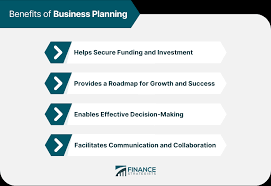A project media plan is a table that helps collect information about all advertising campaigns in one place and analyze their effectiveness. We explain what an advertising campaign media plan is, what it should contain, how to create and use it.
What is a media plan?
Why do you need a media plan?
How to Prepare for Creating a Media Plan
What indicators to include in the media plan
How to evaluate the effectiveness of a media plan
The main thing about the media plan
What is a media plan?
Table of Contents
A media plan is a marketing tool for distributing advertising budgets and evaluating campaign results. A media plan is like a weather forecast: a marketer uses data from previous campaigns to predict what results to expect from a new one. It specifies promotion channels, budgets, release dates, cost forecasts, approximate conversions, profit, and average check.
Working with a media plan and systematic management of advertising campaigns is called media planning. This is a process from setting campaign goals to calculating results.
A media plan is not a content plan. It is a document on paid promotion that helps plan and forecast lead generation — the performance of target actions by clients on a website or in social networks. And a content plan is a list of topics for materials, headings and platforms for placement. It is used to prepare content for social networks, media, blogs, messengers.
If a specialist launches many advertising campaigns at the same time, which are switched on and off, then the creation of a media plan can be high-level: it identifies channels, costs and large intermediate stages of the sales funnel.
If the business is small, the media plan is prepared by an Internet marketer. If the business is large with different departments, specialists in the following areas may be responsible for budget distribution and forecasts: targetologists, contextualists, etc.
Read Also:Brand manager: what does he do, what skills are needed and how to become one
Why do you need a media plan?
A media plan helps to keep information on all advertising campaigns in one place: deadlines, formats, budget, results. Even if there are few promotion channels, media planning systematizes the work and solves four key tasks of a specialist.
Plan advertising campaigns. A media plan helps you understand what to focus on and how to allocate resources.
Monitor the progress of the campaign. Regularly checking the results against forecasts helps to adjust the promotion in time: disable ineffective campaigns, redistribute budgets.
Justify requests. The visibility of the media plan helps justify requests when budgeting. It shows how much previous campaigns cost, whether they paid off, and how much money might be needed for the next ones.
Analyze effectiveness. A media plan helps you understand which creatives, formats, and messages worked to improve the results of your next advertising campaign.
The second campaign with a predicted conversion of 4% failed because the actual conversion was 0%.
How to Prepare for Creating a Media Plan
When creating a media plan, you need to move from data analysis to budget allocation:
1. Analyze the brand’s position.
If it is mature, has long occupied a niche in the market and has a client base, then there is no need to collect analytics from scratch. Before developing a media plan for an advertising campaign, it will be enough to check the relevance of the data.
2. Collect data.
To forecast costs, conversion, cost per click and other indicators, you need to analyze the results of past campaigns. For example, last month a marketer launched advertising in Yandex Direct. Over the month, the campaign generated a cost per application of 2,370 rubles and a conversion rate to application of 2.93%. This data is taken into account in media planning.3. Set goals.
The goals of an advertising campaign depend on the business objectives. If the product is new and it is important to increase awareness, then the key metrics of media planning will be coverage and impressions. If the product is mature, then it will be important to increase the average check and additional sales. Always consider seasonal demand – this affects the results of the campaign.
4. Select promotion channels.
If, for example, in the last campaign, targeted advertising on VKontakte worked poorly and advertising on Yandex exceeded expectations , you can try to redistribute the budget: abandon targeting on VKontakte, invest more in Direct and experiment with a new platform.
5. Set campaign KPIs.
KPIs (short for Key Performance Indicators) depend on the campaign goals. For an awareness campaign, reach and impressions are important, while for a lead generation campaign, clicks on ads and applications are important.
6. Allocate the budget and start promotion.
The budget is distributed based on data from past campaigns and information from forecasters – services that calculate the preliminary cost of advertising. After this, all that remains in the media plan is to distribute the amounts among advertising accounts, and you can launch the promotion.
Media planning is one of the key tasks of an internet marketer. In the Yandex Practicum course “Internet Marketer”, students learn to analyze the position of a brand, distribute budgets and evaluate the effectiveness of advertising. You can sign up for the free part right now.
Read Also:Fashion Valley Mall: Shopping Guide
What indicators to include in the media plan
For the tool to work, you need to check the results against it: if the planned indicators of the media plan are far from reality, the campaign needs to be adjusted, turned off or restarted. Here are the indicators that should be included in the media plan and monitored:
1. Promotion channels.
A media plan can also consist of one channel, for example, if we are talking only about targeted advertising on VKontakte or a campaign in Yandex Direct. If there are several channels and campaigns in them, a media plan helps to organize them and add clarity to the process.
2. Advertising campaign timing.
If an advertising campaign includes two or more promotion channels, they may not work simultaneously and not for the entire planned period. In this case, the document must specify the type of channel and the promotion period in it.
3. Budget.
This is a media plan column with expenses for each promotion channel and format. To fill it, you can use forecasters. For Yandex Direct — the “Budget Forecast” block, for Google Adwards — Keyword Planner.
4. Advertising campaign goals.
Advertising campaign goals should be specific, measurable, achievable, and have deadlines. Getting 100 applications from the site is a poorly achievable goal. Increasing the number of applications from the site from 80 to 100 by June 1 are clear requirements.
5. Key performance indicators, or KPIs.
These are the columns in which the Internet marketer enters key metrics for tracking: reach, impressions, clicks, transitions to the site, cost per click, cost of attracting one client.
Important metrics for measurement should be added to the media plan. For example, in the media plan for contextual advertising, this is the frequency of ad impressions. For performance advertising on VKontakte, this is the number of likes and reposts.
6. Cost per sale and other payback indicators.
These are the columns of the media plan with the expected effect. They can be formulated based on the forecast of the advertising system, as in the case of targeted advertising, where the service calculates the cost of a click or impression.
The cost of one sale is calculated as follows:
Read Also:Health Insurance Marketplace: Quick Overview
How to evaluate the effectiveness of a media plan
At the start of the campaign, they are learning, so the first two weeks may not be indicative. At this stage, it is important to compare the current real indicators with the forecast in the plan, but do not rush to turn off or restart the campaigns. After a couple of weeks, you can analyze the results and decide whether to turn off the campaign or scale it up.
Here’s how you can monitor campaign performance:
● In targeted advertising: as a rule, the sites where a specialist launches advertising campaigns have built-in accounting systems. You can see the cost of a click, conversion, reach, impressions and other indicators.
● In monitoring applications from the site: via Yandex Metrica or Google Analytics. If CRM is connected , you can track efficiency through it.
The main thing about the media plan
A media plan is a tool that helps plan advertising campaigns and evaluate their effectiveness. For this purpose, the document records key indicators.
The media plan systematizes the work of an internet marketer , because everything is in one table: deadlines, formats, budget, results.
Working on a media plan includes six main stages: brand position analysis, goal setting, collecting data on past campaigns, choosing promotion channels, setting KPIs, budget allocation and launch.
The metrics included in the plan depend on the campaign goals. These can be reach, impressions, clicks, applications, views.
A media plan is useful if forecasts are constantly checked against reality and adjusted as the campaign progresses.












